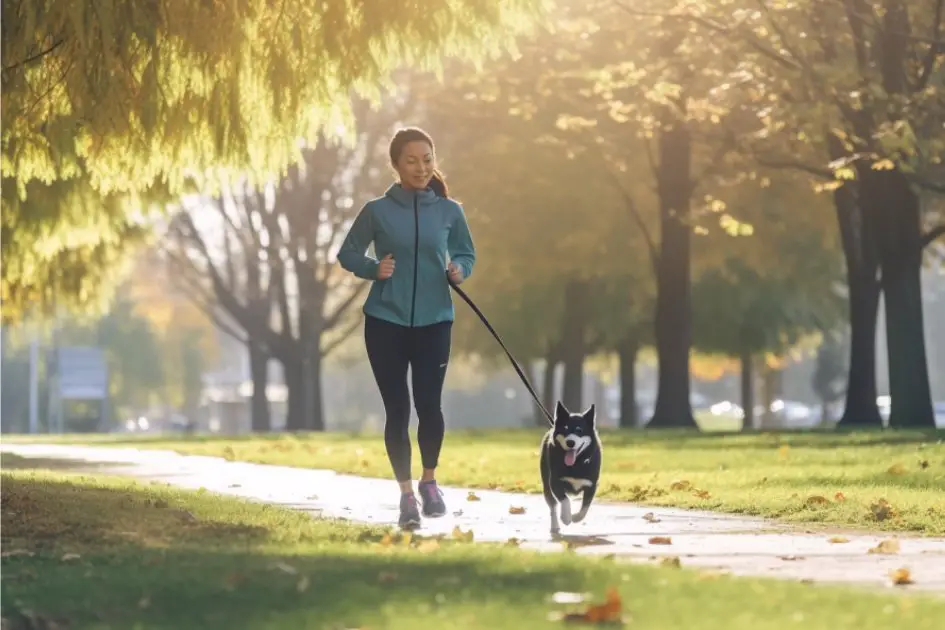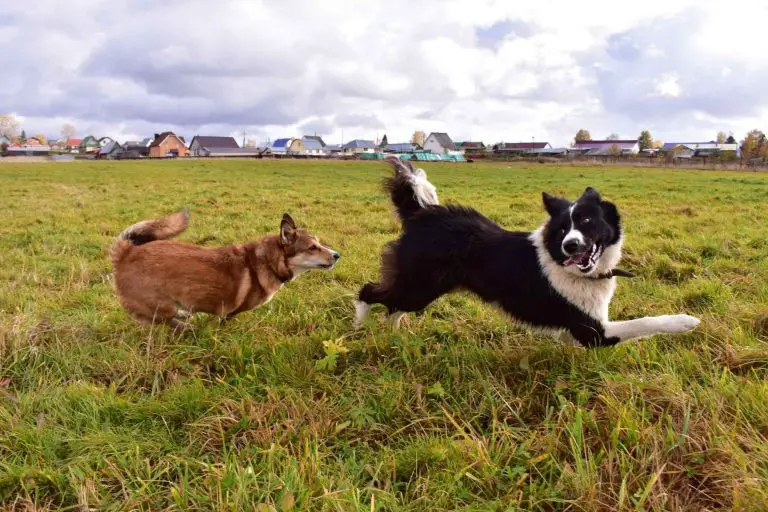Running with Your Dog: A Comprehensive Guide for Fitness Enthusiasts

Running with your dog can be a rewarding and healthy way to bond with your furry friend. Ensuring a regular exercise routine not only benefits your dog’s physical health but also enhances their mental well-being. Many dog breeds thrive on the opportunity to stretch their legs and burn off pent-up energy.
Before embarking on a running adventure with your canine companion, it is crucial to take certain factors into consideration. These include the breed’s suitability for long-distance running, appropriate pacing, and the importance of proper training. Addressing these aspects will help create an enjoyable and safe experience for both you and your dog.
In this article, we will explore the benefits of jogging with your dog, tips for preparing and starting your runs, and notes on prioritizing your dog’s health and comfort throughout the process. By following the guidelines provided, you and your four-legged running partner will be well on your way to reaping the rewards of this engaging shared activity.
Benefits of Running with Your Dog
Running with your dog provides several advantages not only for you, but also for your furry friend. In this section, we will explore the health advantages, happiness, and bonding that result from this enjoyable activity.
Health Advantages
Running is known to provide numerous health benefits, and this applies to both humans and their canine companions. Regular running helps maintain a healthy weight and reduces the risk of health issues, such as obesity, heart diseases, and joint problems.
For dogs, running allows them to burn off excess energy, keeping them at a healthy weight and reducing chances of developing behavioral problems. Moreover, it aids in muscle development and supports their cardiovascular health. Running together promotes a healthy, active lifestyle for both you and your pet.
Happiness
Physical exercise has been proven to stimulate the production of endorphins, which are hormones responsible for feelings of happiness and euphoria. As such, engaging in regular physical activity, like running, can help elevate the mood of both you and your dog.
Moreover, since dogs are social animals, they often find happiness in interacting and bonding with their owners. Going for runs with your canine companion opens up opportunities for socializing with other dogs or people, which can lead to a happier, more sociable pet.
Bonding
Spending quality time together, such as going for a run, is one of the best ways to strengthen the bond between you and your dog. This shared experience helps build trust, loyalty, and a sense of understanding between you and your pet.
Moreover, running with your dog facilitates communication and training, as you both learn to respond to each other’s cues and body language while navigating different terrains or obstacles.
Selecting the Right Breed for Running
When it comes to choosing the ideal running companion, the breed of the dog plays a significant role. Certain dog breeds are naturally better suited for running and outdoor activities due to their size, energy levels, and physical attributes. To ensure a fulfilling and enjoyable running experience for both you and your canine friend, consider the following aspects while selecting the right breed.
First and foremost, the size of the dog is essential when planning for a running partner. In general, dogs with medium to large builds, such as Labrador Retrievers, Border Collies, and German Shepherds, are ideal for hitting the pavement. Their long limbs and powerful strides allow them to keep up with an average human pace effortlessly. Smaller breeds, on the other hand, might have difficulty keeping up due to their shorter legs and less muscular structure.
It’s important to remember that not all breeds are suitable for running. Brachycephalic dogs, those with shortened noses and flat faces like Pugs and Bulldogs, can have trouble breathing during strenuous activities, making them unsuitable as running partners. Moreover, their predisposition to overheating poses increased health risks if they participate in vigorous exercise sessions.
An intelligent approach would be to make a list of dog breeds that meet your specific running needs and preferences. To assist you in this process, here are some popular breeds typically recommended for runners:
- Labrador Retriever
- Border Collie
- German Shepherd
- Golden Retriever
- Weimaraner
- Australian Shepherd
Keep in mind that each dog’s personality, temperament, and physical traits play a vital role in determining their suitability as running partners. Consult with experts like veterinarians, trainers, and breeders to gather reliable information and make an informed decision when selecting the right breed for running.
Age Considerations and Overall Health
When considering running with your dog, it is important to factor in both their age and overall health. Puppies, for example, should not begin running with their owners until their growth plates have closed. This typically occurs between 12 to 18 months of age; however, consulting with a veterinarian is advised to determine the appropriate time for each individual dog.
Older dogs may also face age-related challenges when it comes to running, such as arthritis or a decreased energy level. It is crucial to remain observant and attentive to your dog’s behavior during runs. Consult your veterinarian if you notice any signs of discomfort or decreased mobility.
When evaluating your dog’s overall health, take note of their weight, as overweight dogs may be at a higher risk for injury while running. Implementing a healthy diet and gradually increasing exercise can significantly reduce this risk. Again, it is essential to speak with a veterinarian to develop a plan tailored to your dog’s specific needs.
In summary:
- Wait until puppies’ growth plates have closed before running together.
- Be attentive to older dogs’ needs and consult with a veterinarian regarding any concerns.
- Monitor your dog’s weight and maintain a balanced diet to prevent injury.
Training Your Dog for Running
Starting with Walking
Before you begin running with your dog, it’s essential to first establish a solid foundation in walking on a leash. Start by implementing a consistent training plan that includes daily walks on a regular leash. During these walks, focus on teaching your dog appropriate walking etiquette, such as staying by your side and not pulling on the leash.
Consider incorporating a hands-free dog leash into your training routine, as it will allow you to maintain better control while keeping your hands free during the runs. Gradually increase the distance and duration of your walks, monitoring your dog’s response to ensure they are comfortable with the pace and duration.
Introducing Running
Once your dog has mastered walking on a leash, it is time to introduce running. Start by running short distances at a slow pace, allowing your dog to adjust to the new speed. Be attentive to your dog’s cues and body language to ensure that they are comfortable and enjoying the activity. Gradually increase speed and distance over time, while always maintaining a safe and manageable pace for your dog.
Introduce speed cues to your dog during these initial runs. These verbal or nonverbal signals will help your dog understand when to walk, jog, or run during your outings. Consistently using these cues will enable your dog to anticipate the changes in pace more effectively.

Running on Leash
Running with your dog on a leash requires additional training to ensure the safety and enjoyment of both you and your pet. To establish good leash manners, practice running on the leash in a controlled environment, such as a quiet park or neighborhood. Encourage your dog to remain by your side, with slack in the leash, and correct any pulling behavior promptly.
Teach your dog a reliable recall command, which will be essential if you need to call your dog back to your side while moving. This skill can be particularly useful in situations where your dog may be distracted by other animals, people, or obstacles.
Lastly, consistently reinforce your dog’s positive behavior and obedience while running on a leash. This will help strengthen the bond between you and your dog and create an enjoyable running experience for both of you.
Tools and Equipment
When running with your dog, it’s essential to have the right tools and equipment to ensure both you and your pet have a safe and enjoyable experience.
Choosing the Right Leash
The type of dog leash you choose is crucial for running. Traditional leashes may not be the best option because they can hinder your stride and leave you feeling off-balance. Instead, consider a hands-free dog leash, which allows you to maintain proper running form and gives your dog some room to maneuver.
Hands-free dog leashes typically attach to a belt worn around the waist, providing a secure connection to your dog while keeping your hands free. Some features to look for in a hands-free dog leash include:
- Adjustable length to suit your running style
- Shock-absorbing material to reduce strain on your dog and yourself
- Reflective elements for increased visibility during early morning or evening runs
Selecting a Dog Harness
A dog harness is essential for running, as it distributes pressure evenly across your dog’s chest and back and allows for better control. There are various types of dog harnesses designed specifically for running or walking, and it is important to choose the one that best suits your dog’s size, breed, and running abilities.
When selecting a dog harness, look for:
- Adjustable straps that provide a snug and secure fit
- Padding for added comfort during extended runs
- Strong, durable materials that can withstand wear and tear
By investing in the proper tools and equipment, you will ensure that both you and your dog have a safe, comfortable, and enjoyable running experience.
Safety Precautions and Weather Conditions
It is essential to keep both you and your dog safe while running in various weather conditions. This section covers some tips on how to maintain safety during hot and cold weather and how to minimize the risk of ticks and insect exposure.
Hot Weather Tips
Running in hot weather can be dangerous for your dog as they are at risk of heatstroke. To avoid such risks, follow these precautions:
- Run early in the morning or late in the evening when temperatures are cooler.
- Take regular breaks and make sure your dog stays hydrated. Offer water frequently to prevent overheating and dehydration.
- Use a snout soother or pet-safe sunblock on your dog’s nose to protect it from sunburn.
- Watch out for hot pavement which can burn your dog’s paw pads. Consider using paw protector balms or dog boots for added protection.
Cold Weather Tips
Running in cold weather can also pose challenges. To protect your dog from potential harm, follow these precautions:
- Use dog boots to protect your dog’s paw pads from snow, ice, and harmful chemicals like de-icers.
- Dress your dog in a warm coat or sweater if they have a short coat or are sensitive to cold temperatures.
- Keep runs shorter to prevent frostbite or hypothermia, and watch for signs of discomfort in your dog, such as shivering or anxious behavior.
Ticks and Insect Exposure
Be cautious of potential ticks and insect exposure while running with your dog, as they can carry harmful diseases. Here are some tips to minimize tick and insect exposure:
- Keep your dog on a leash and avoid tall grass and heavily wooded areas where ticks and insects may reside.
- Examine your dog thoroughly for ticks after every run, paying special attention to their ears, neck, underbelly, and in between their toes.
- Use tick repellent products and maintain a regular flea and tick preventative routine, as recommended by your veterinarian.
Running Buddy Etiquette and Tips
Running with your dog can be an enjoyable and rewarding experience for both you and your furry friend. However, it is vital to follow proper etiquette and keep some essential tips in mind to ensure a safe and successful outing.
Firstly, training your dog for running is crucial. Begin by incorporating short, easy jogs into your walks to gradually build up your dog’s strength and endurance. Warm-up sessions, such as light stretching of their muscles, can help prevent injuries.
Next, practicing good recall is essential. Your dog should reliably return to you when called, especially in off-leash situations. Teach them basic commands such as “come” and “heel” to ensure their safety during your run.
While running, take note of your dog’s ability and comfort levels, adapting your pace to suit their needs. Ensure your dog is hydrated at all times, offering water breaks as necessary. For longer runs, consider carrying small, nutritious treats for energy and reward during breaks.
Additional considerations for a successful run with your dog include:
- Choosing dog-friendly routes, avoiding high-traffic areas and unsafe terrain.
- Ensuring your dog is well-mannered and does not invade the personal space of other runners or pets.
- Using appropriate gear, such as a well-fitted harness and durable leash for your dog’s comfort and safety.
By incorporating these guidelines and working on your dog’s training, you and your running buddy will enjoy many enjoyable outings together while promoting a healthy and active lifestyle.






